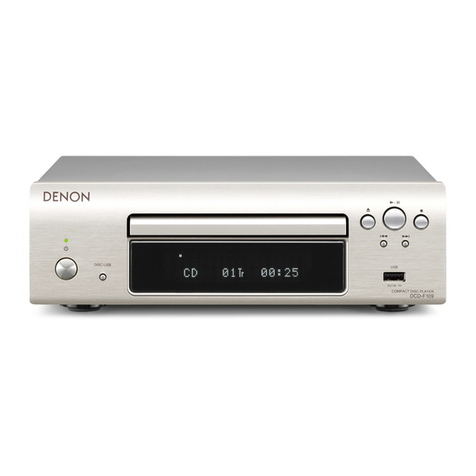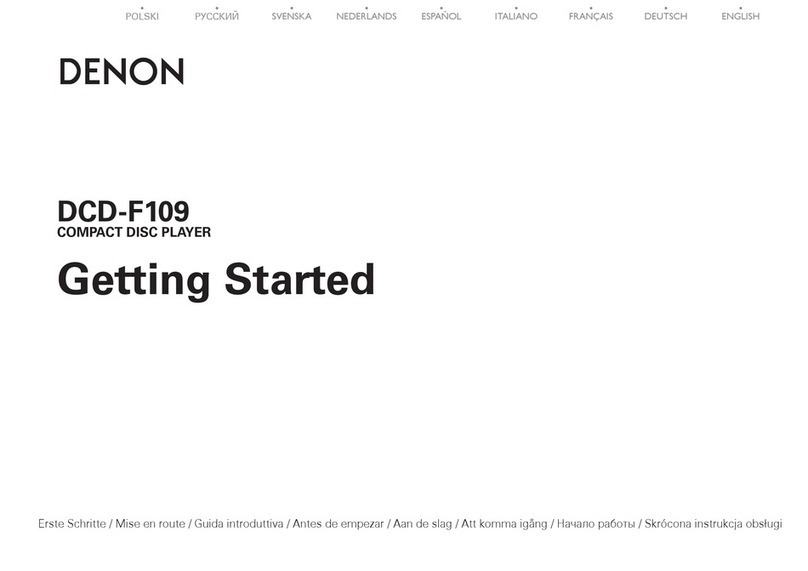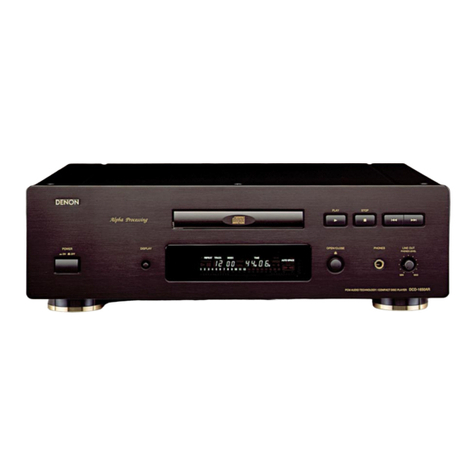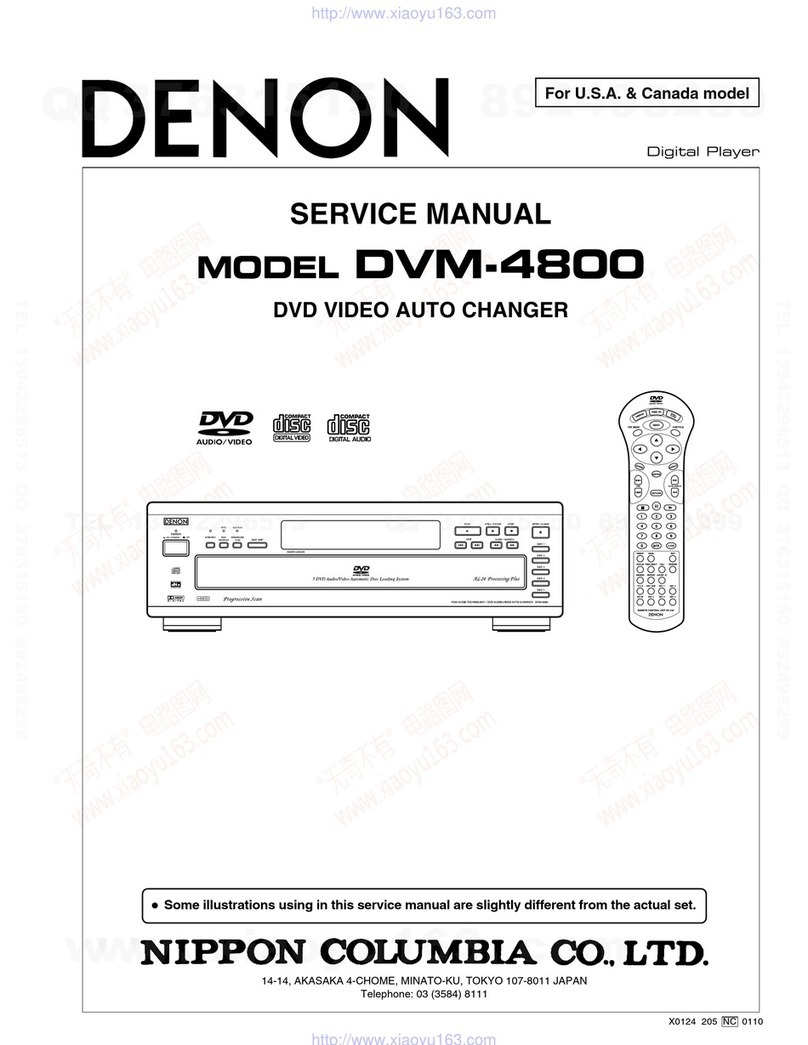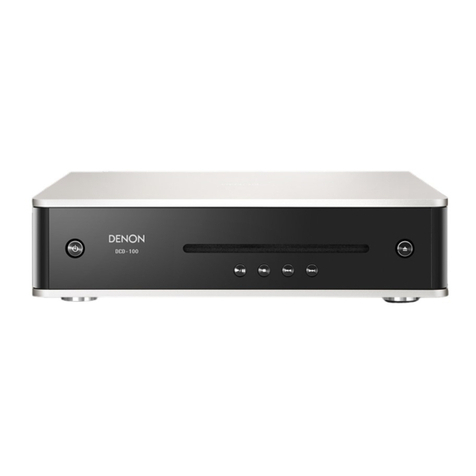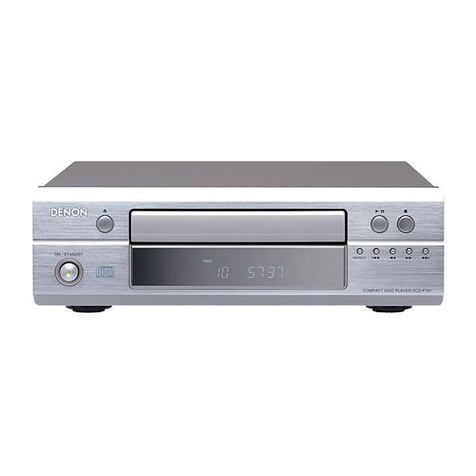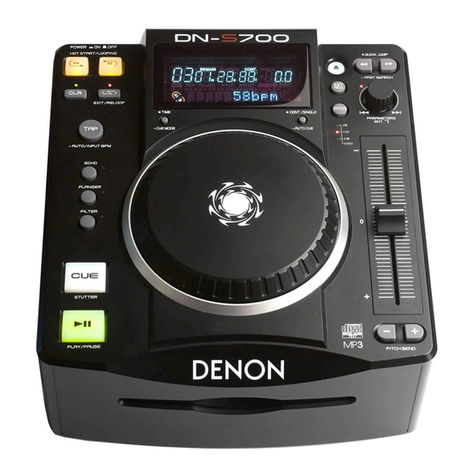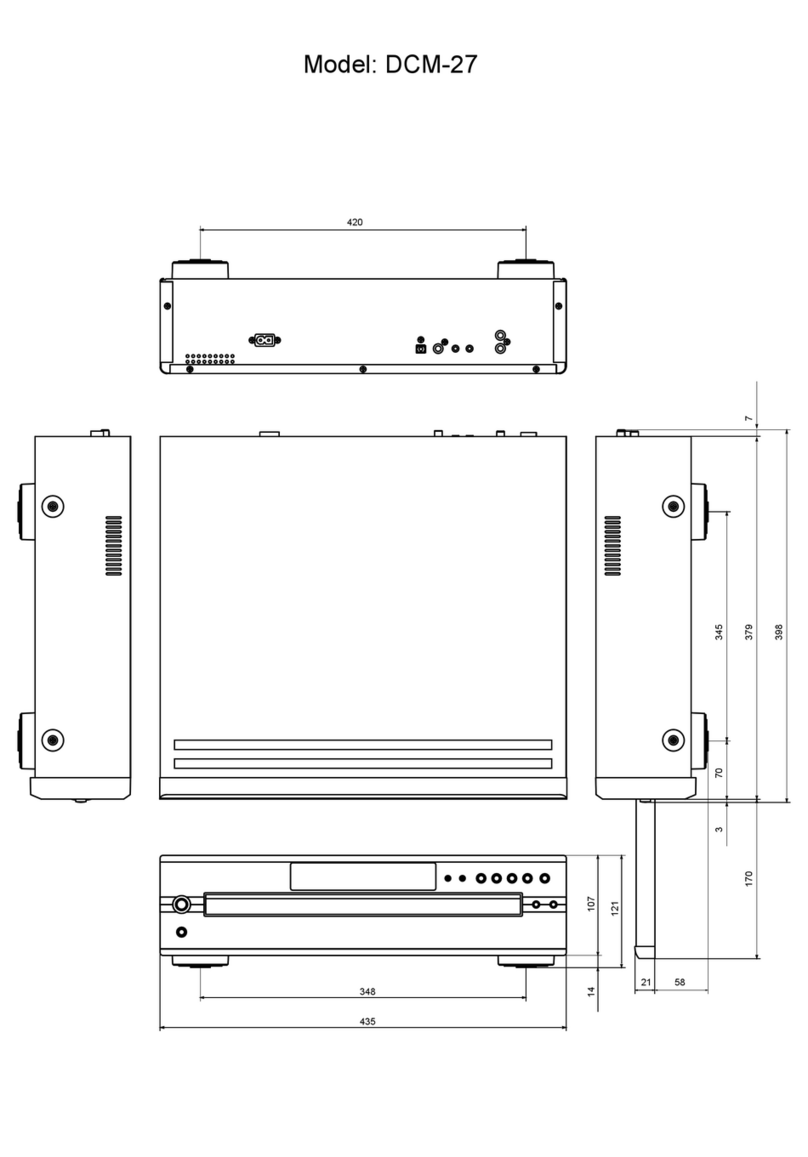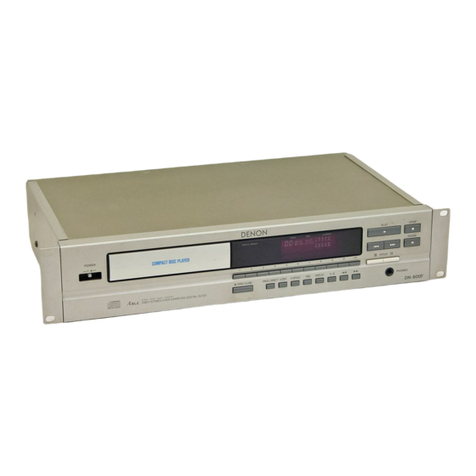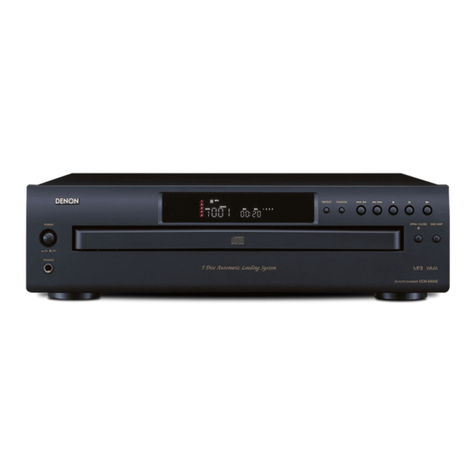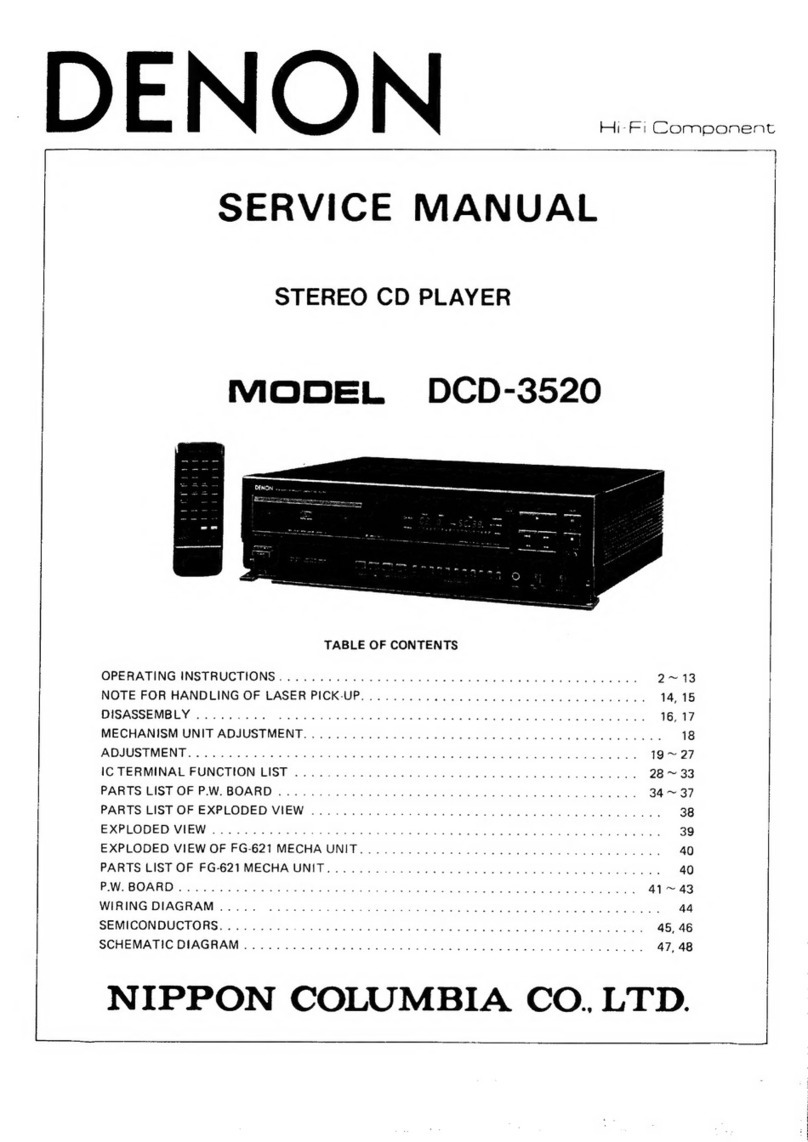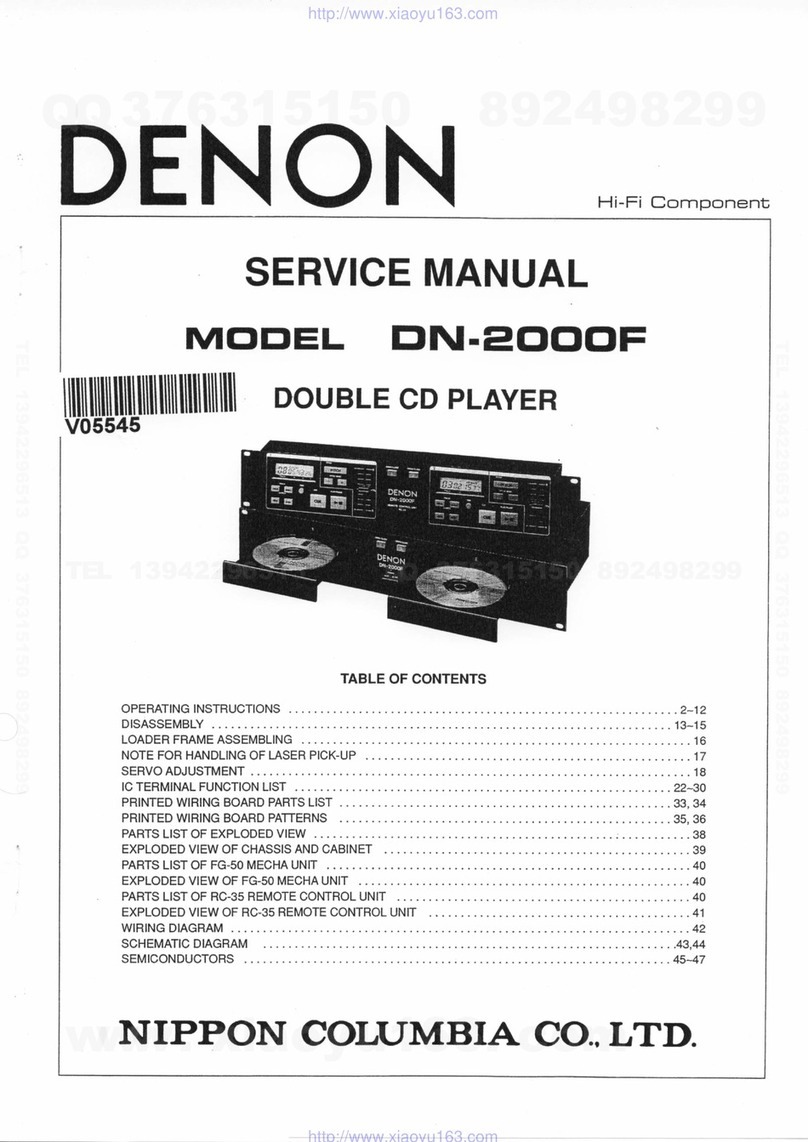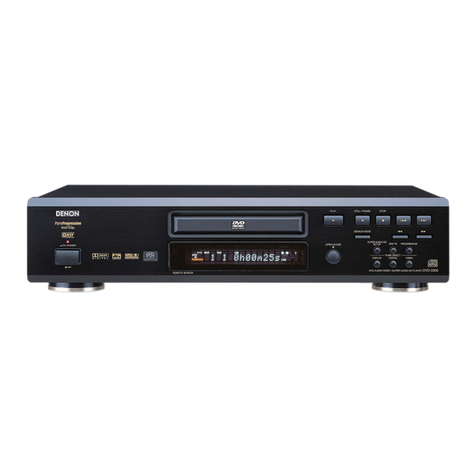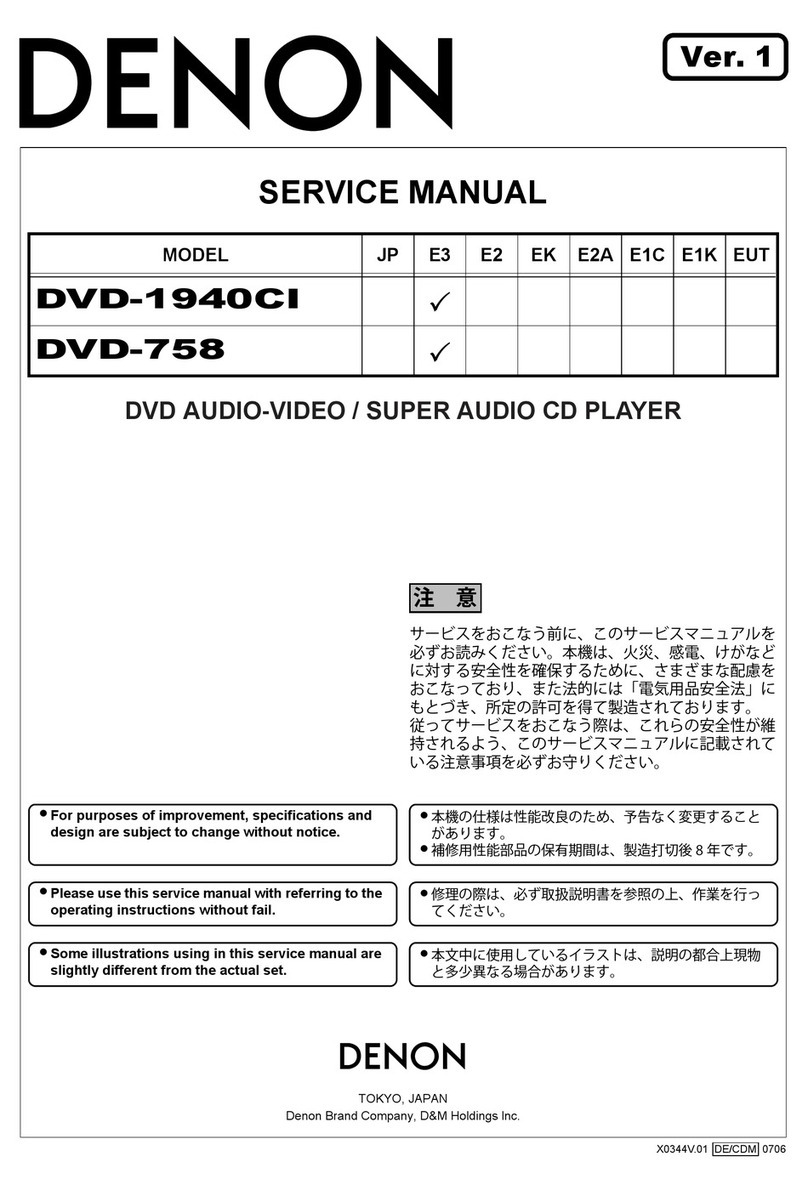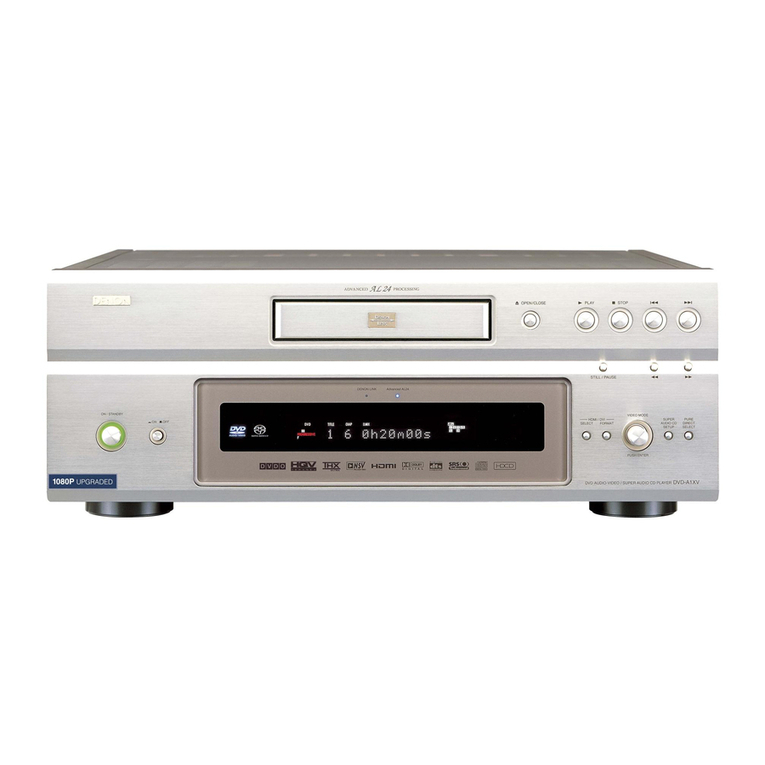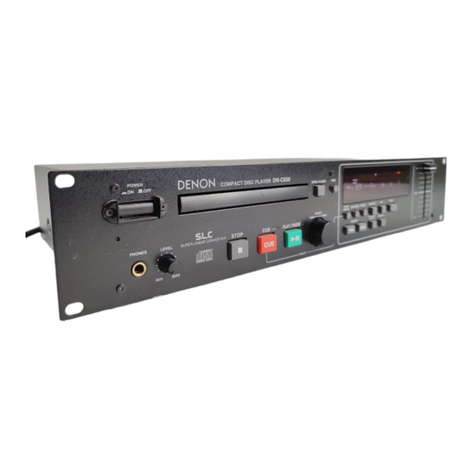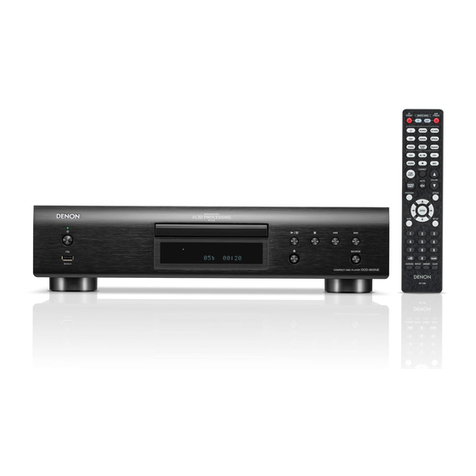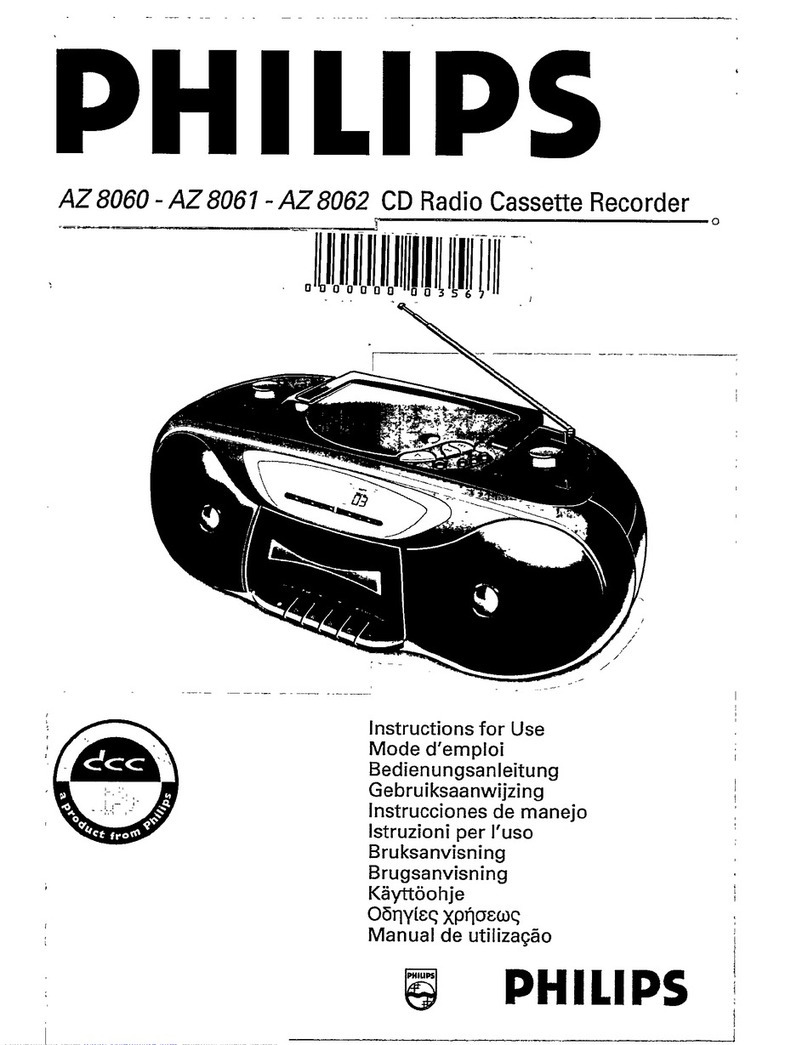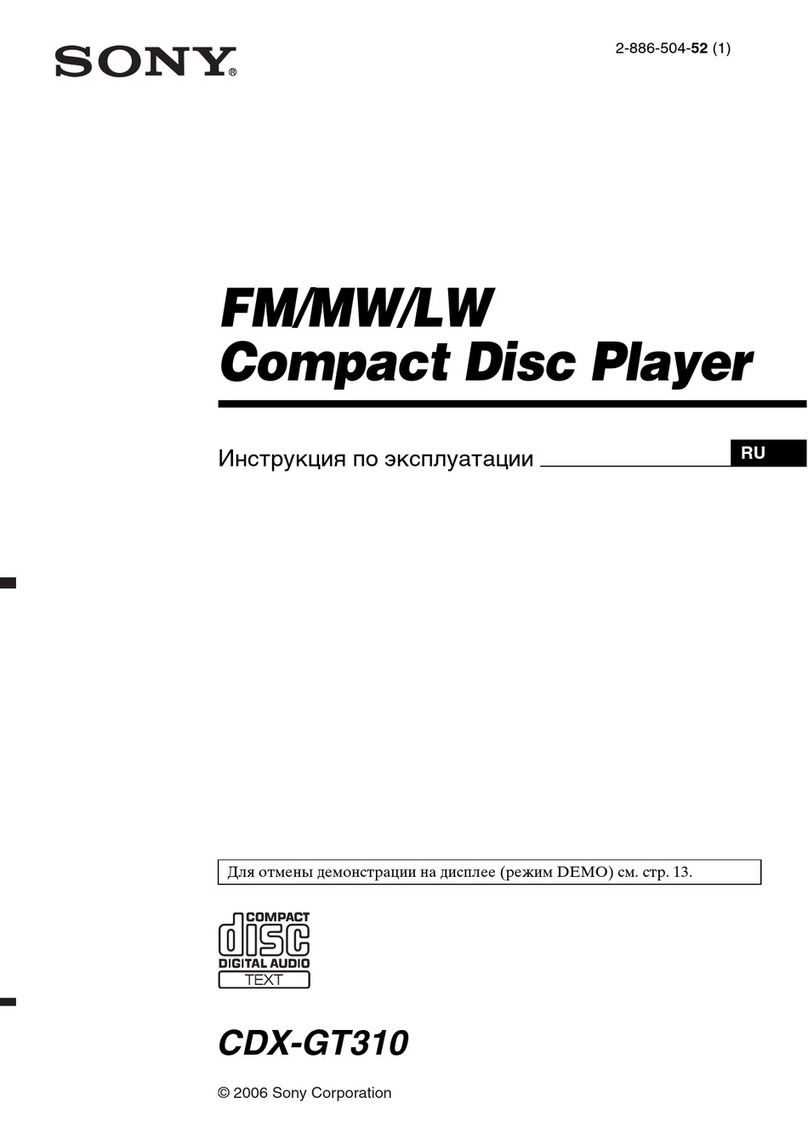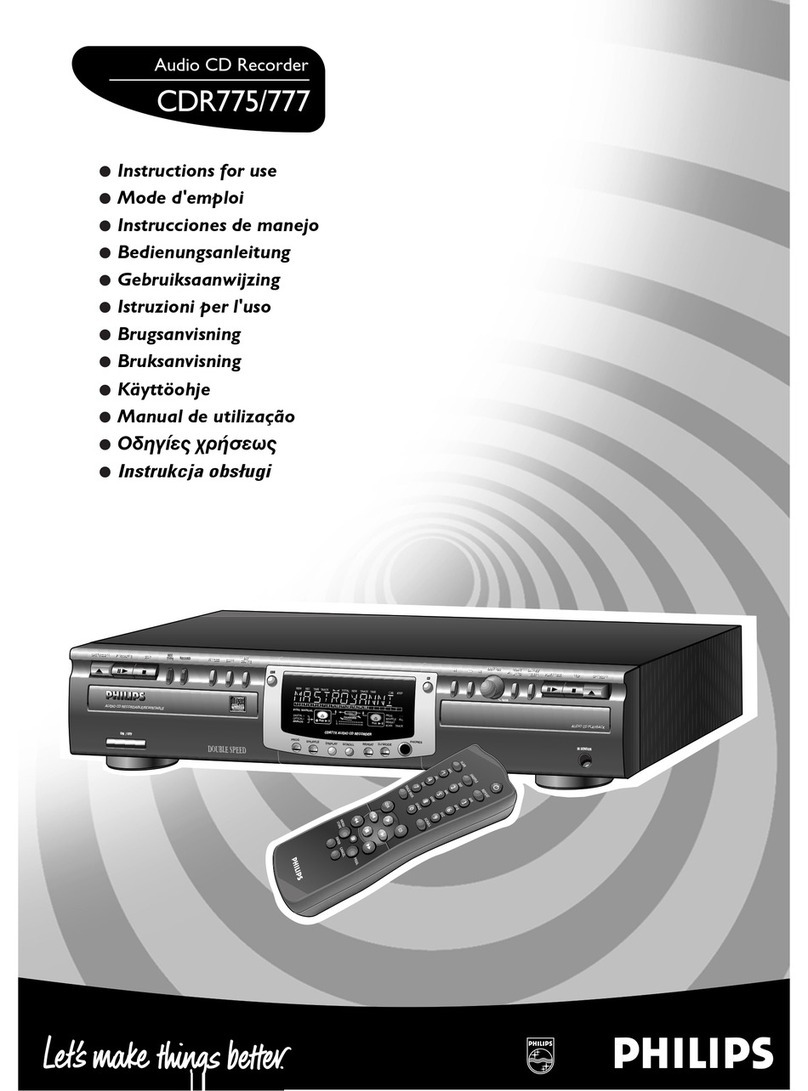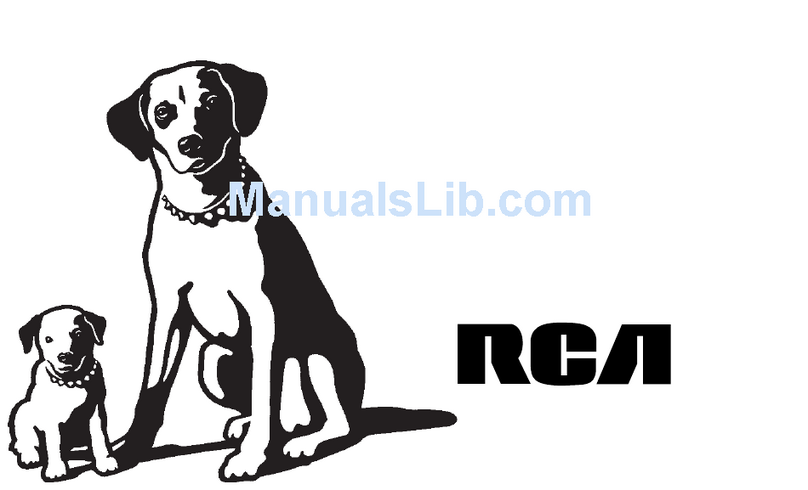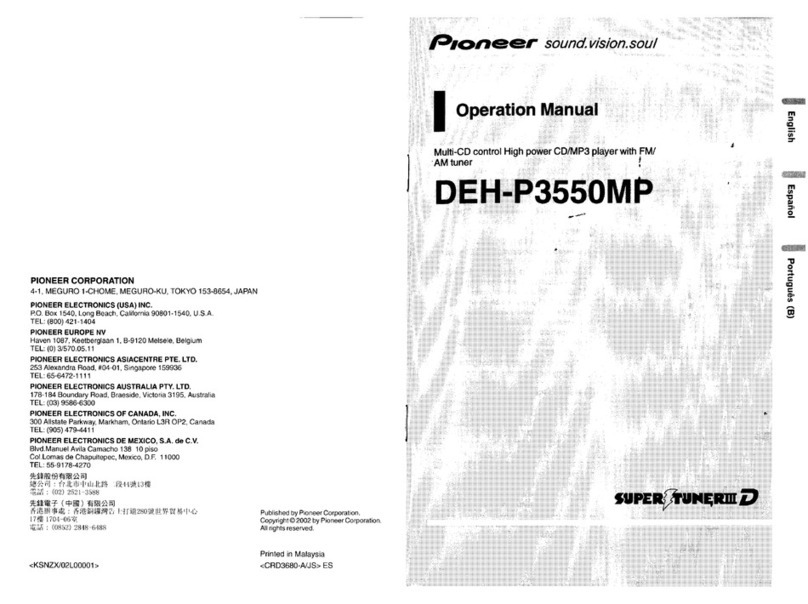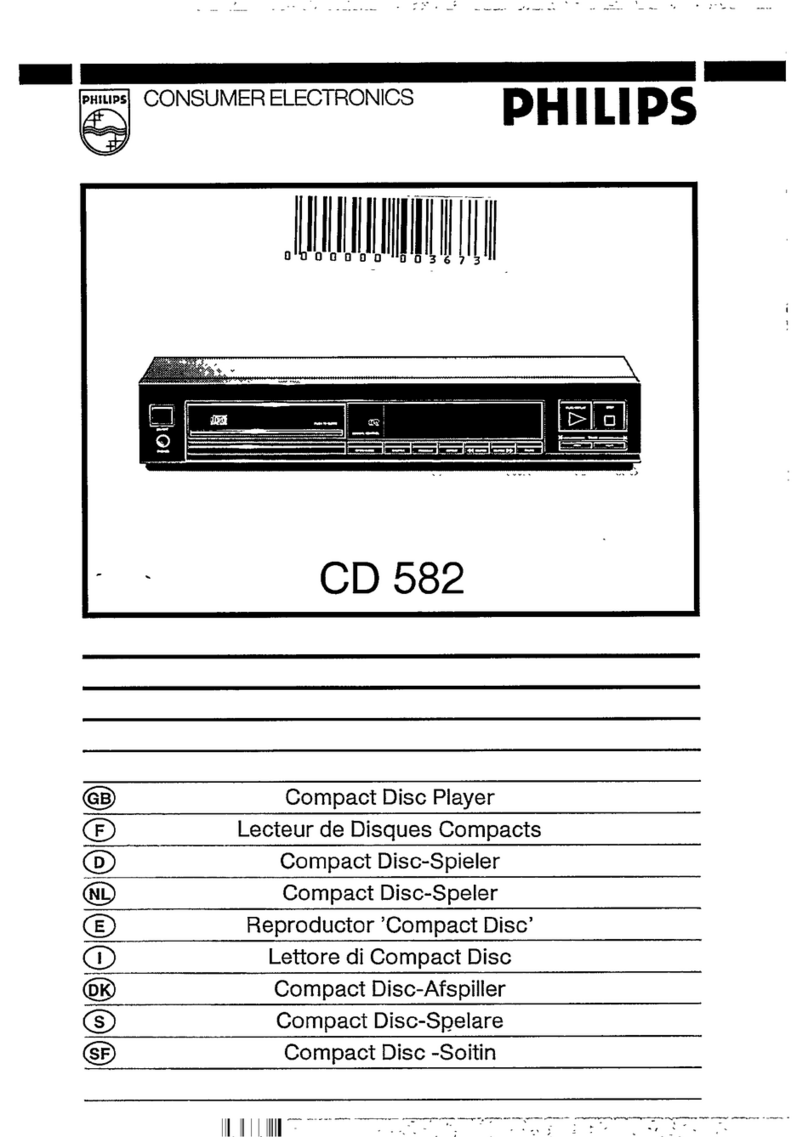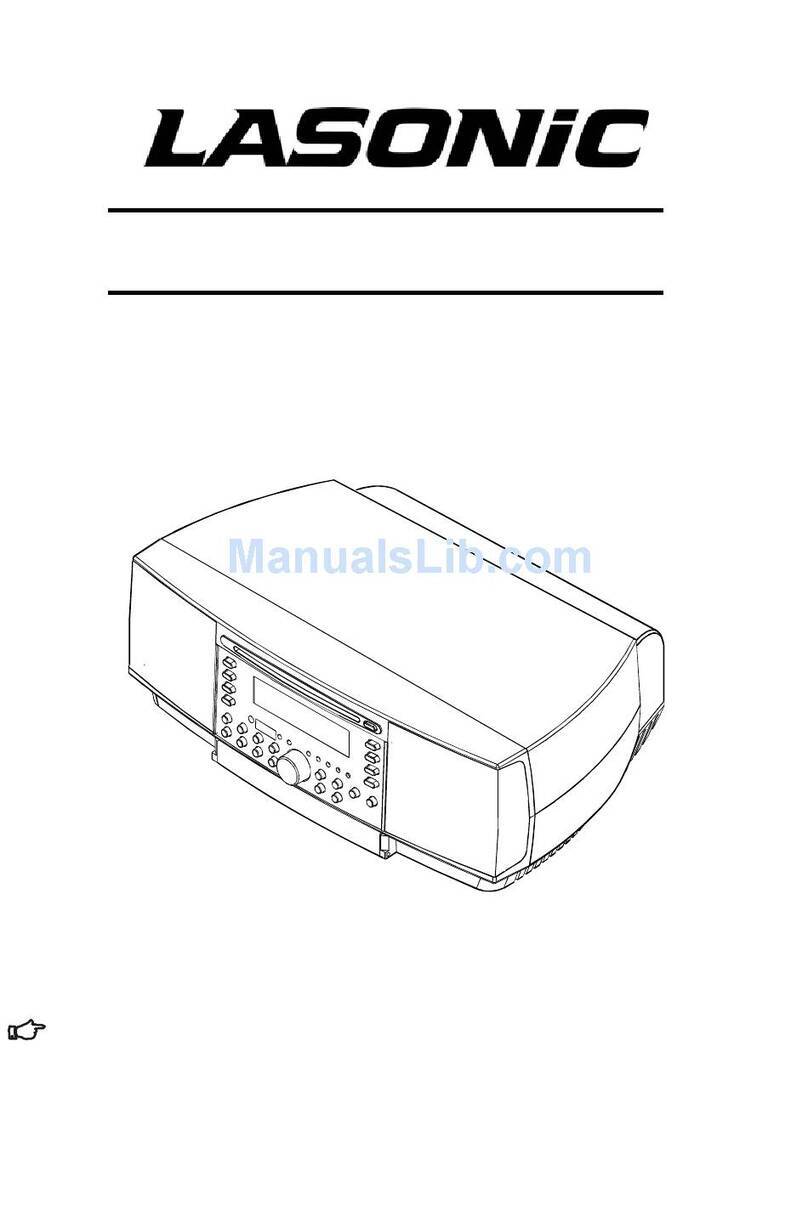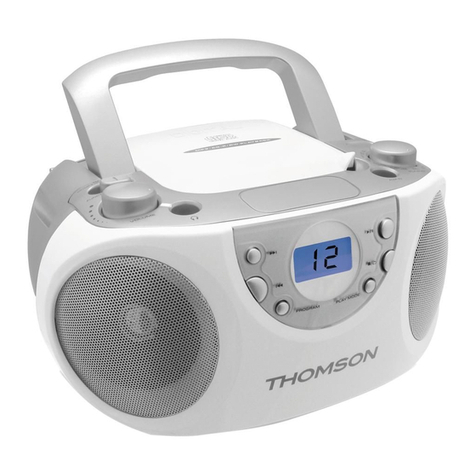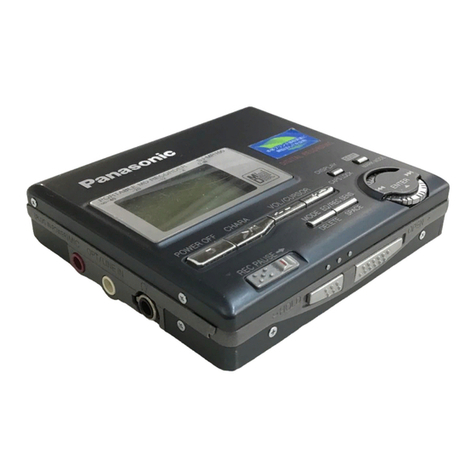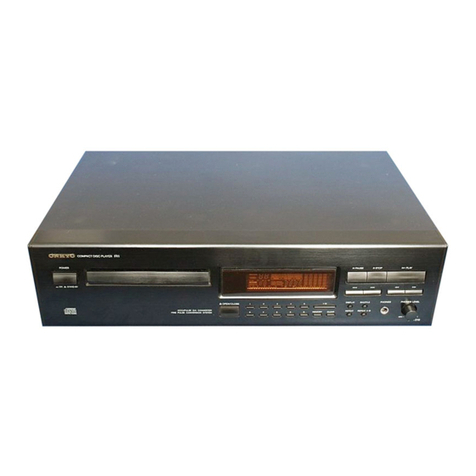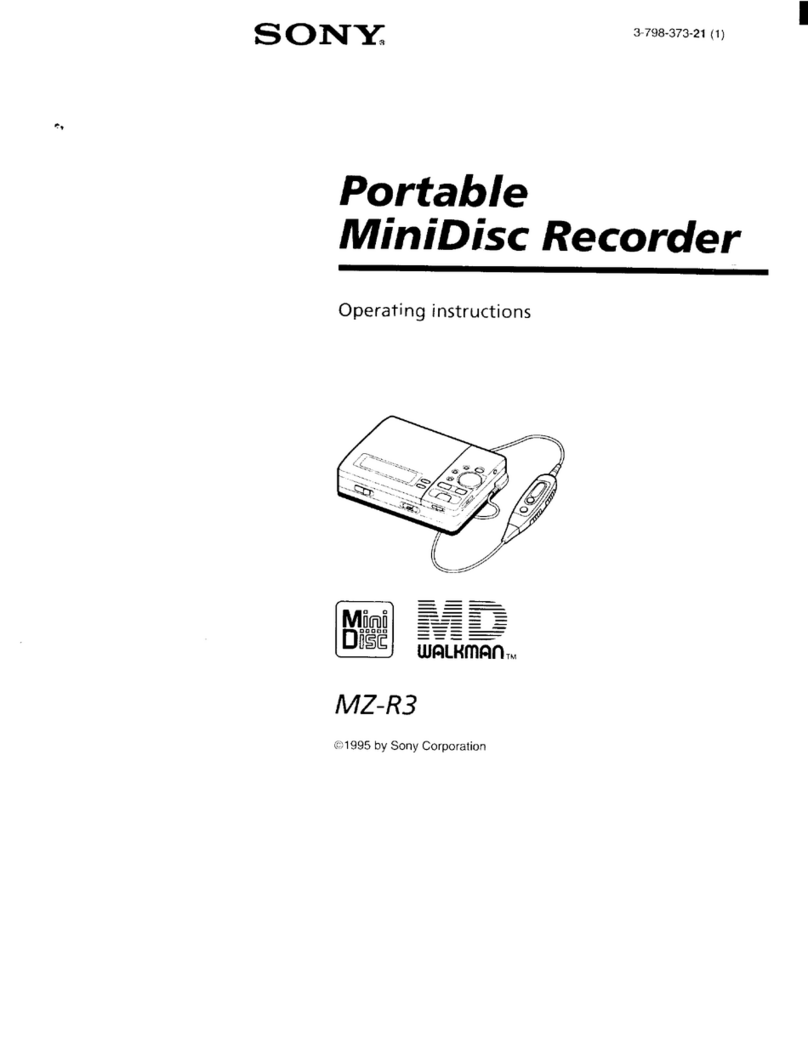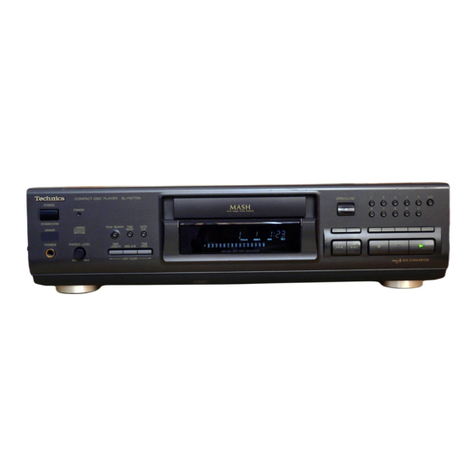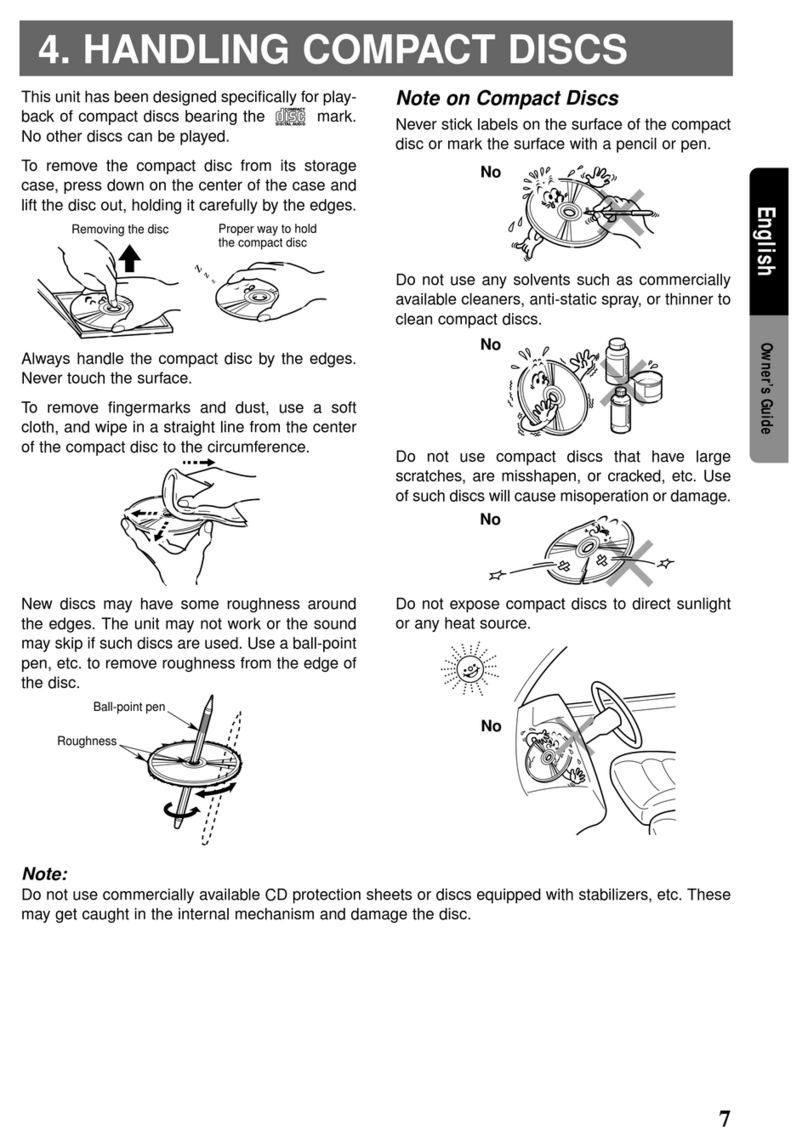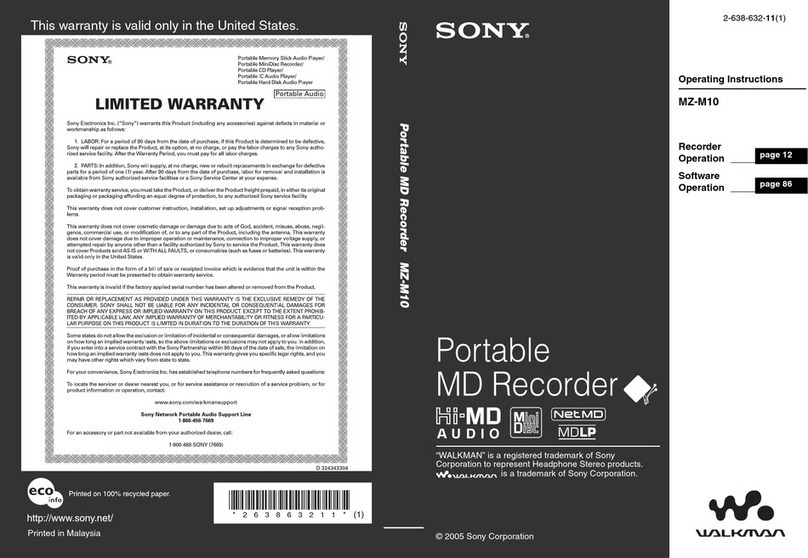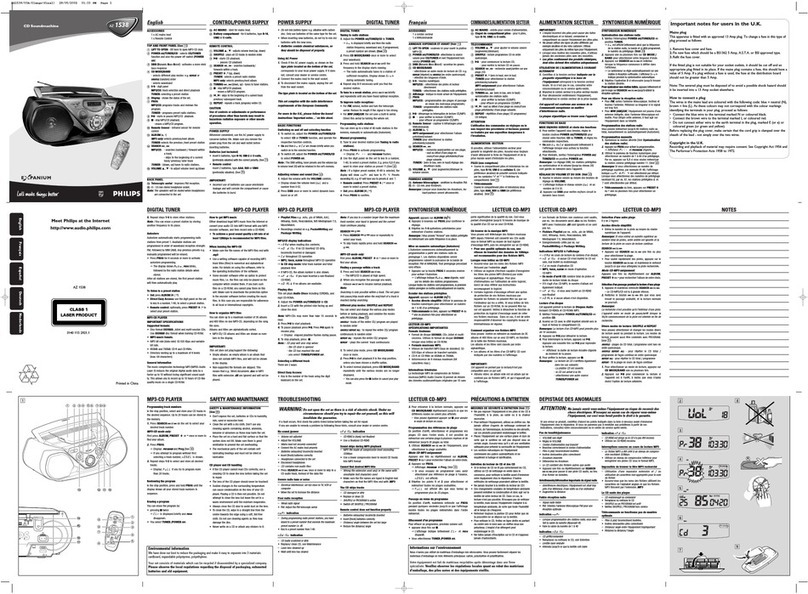@2 EXIT/RELOOP button
• When this button is pushed during a seamless
loop, the track resumes back to normal play
from the B point. (EXIT)
When pushed again, the playback jumps back
into your A-B seamless loop. (RELOOP)
@3 TITLE, FOLDER button
• When the button is pushed, the text
information (Disc title, track title or track artist)
is displayed.
CD-TEXT:
MP3:
• When disc containing MP3 format files is
loaded, push this button for 1 second then the
folder select mode is possible.
@4 MEMO, PRESET button
•MEMO:
The memo mode starts when this button is
pushed once in the Cue mode.
•PRESET:
When this button is pushed for more than 1
sec, the PRESET mode starts.
8
ENGLISH
!2 PITCH BEND +/– button
• The playing speed increases/decreases while
this button is pushed.
• When the button is released, the playing speed
returns to the previous speed.
!3 Pitch slider
• Use this to adjust the playing speed.
• The playing speed decreases when slid
upwards and increases when slid downwards.
!4 PITCH, RANGE button
• Push this button to switch to the play speed
set with the Pitch slider. The PITCH LED lights.
• Push the button again to cancel the pitch play
mode and return to normal speed.
• When this button is pushed for more 1 second,
you can set the pitch range by the track select
knob. (turn and push)
!5 TIME, TOTAL button
• Push this to switch the time display between
the elapsed time or remaining time per track or
per disc.
• When this button is pushed for more 1 second,
you can display the total time. (4 way)
!6 Display
• See page 9.
!7 Shuttle ring (outer ring)
• This control is used to select the scanning
direction and speed.
The CD is scanned in the forward direction
when the shuttle ring is turned clockwise from
the center position. To scan backwards, the
shuttle ring is turned counterclockwise.
• The scanning speed increases as the wheel is
turned further.
!8 Disc holder OPEN/CLOSE button
• Push this button to open and close the disc
holder.
• The disc holder will not open during playback.
Stop playback before pushing this button.
!9 FLIP button
• Push this button to switch between the loop
mode/hot start mode and stutter mode.
@0 A1, A2 buttons
• Push these buttons to set the start point for
loop playback (point A-1 or A-2).
• Push these buttons to use the stutter and hot
start functions.
@1 B button
• Push this button to set the end point for loop
playback (point B).
uContinue/Single button
( CONT./SINGLE, REPEAT)
• Push this button to switch between the single
and continuous play modes.
• The selected mode is indicated by the SINGLE
or CONTINUE indicators on the display.
• Push this button for over 1 seconds to turn the
repeat mode on and off.
iJOG MODE, BRAKE button
• Push this button to select the jog wheel
operating mode.
Search mode:
Turn the wheel clockwise to move the playback
position forward, counterclockwise to move
the playback position backward.
One click corresponds to one frame of
movement.
Pitch bend mode:
When the jog wheel is turned, the playing
speed changes. (The BEND LED lights up.)
Brake mode:
When this button is pushed for more than 1
second, you can turn the Brake mode on and
off.
oTrack select knob
(8–9/PUSH ENTER)
• Turn this knob to select the first or next track to
be played.
• Turn the knob clockwise by one click to move
one track forward, counterclockwise by one
click to move one track backward.
• When the knob is turned while pressing it
down, one click corresponds to advancing 10
tracks at a time.
• In the preset mode, use this knob to set and
enter preset settings.
!0 CUE button
• Pushing the CUE button during play provides a
return to the position at which play was
started. Alternately pushing the PLAY/PAUSE
button and the CUE button allows the CD to be
played from the same position any number of
times.
• The CUE button lit, when the standby mode is
set.
• When in the sleep mode, cancel the sleep
mode.
!1 PLAY/PAUSE button (13)
• Use this button to start playback.
• Push once to start playback, once again to set
the pause mode, and once more to resume
playback.
• In the brake mode, during playback push this
button to brake.
Track artist
Track title
Disc title
(3) DN-D4000 Rear panel
@5 Analog output jacks 1, 2
(ANALOG OUT 1, 2)
• These are unbalanced output jacks. The audio
signals from the CD players are output from
these jacks.
@6 Digital output jacks 1, 2
(DIGITAL OUT 1, 2)
• Digital data is output from these jacks
according to the presettings.
• We recommend using a 75Ω/ohm pin cord
(available in stores) for connections.
@7 Fader input jacks 1, 2 (FADER 1, 2)
• Use this when using the unit with a console
fader. (Mini Jack)
(FADER INPUT LEVEL HCMOS (Ii=–3mA))
• The fader can be activated using the switch
circuit shown on the diagram below.
• Connect SW1 to the “Lch” stereo mini jack.
• Connect SW2 to the “GND” stereo mini jack.
• Connect GND* to the analog output “GND”
terminal.
• Do not use the “Rch” jack.
2 line mode: (Preset item 8)
• When SW1 is pressed, playback starts from
the cue point.
• When SW2 is pressed, playback stops and
resumes the cue point.
1 line mode: (Preset item 8)
• When SW1 is turned on, playback starts from
the cue point.
• When SW1 is turned off, playback will be
pause mode.
@8 Remote control connector
(REMOTE)
• Connect this connector to the RC-D40 control
unit using the included control cord.
NOTE:
• Turn PITCH control OFF when making
digital recordings. Most digital recorders
will not accept a variable pitched digital
signal.
